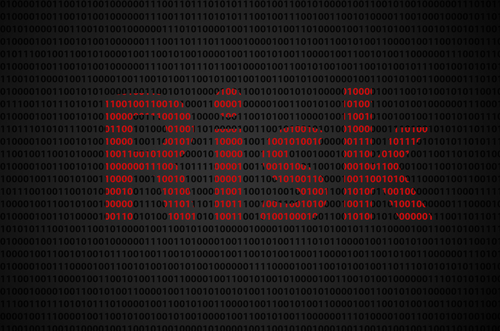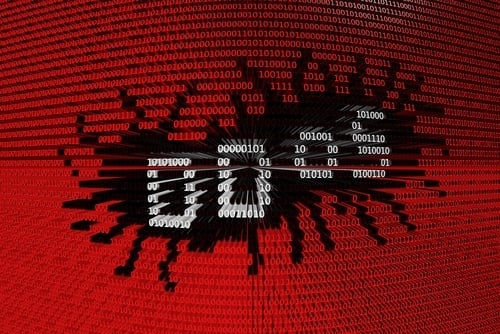In the darkest corners of the digital realm, where lines of code wield the power to plunder Fortune 500s and cripple nations, a cyber nemesis had reigned supreme for over a decade.
That is until this week when the U.S. Federal Bureau of Investigation (FBI) joined forces with international allies to deliver a crushing blow to the infamous Qakbot botnet.
The takedown of Qakbot wasn't just a victory; it was the shattering of a digital Goliath that had terrorized individuals and businesses alike. This operation is being hailed as one of the largest ever enforcement actions led by the United States against a botnet.
The significance of this achievement cannot be overstated, as Qakbot has been responsible for a multitude of cybercrimes, including ransomware attacks and financial fraud, causing massive losses to victims and infecting over 700,000 computers worldwide.
On August 29, the FBI, in conjunction with law enforcement agencies in France, Germany, the Netherlands, Romania, Latvia, and the United Kingdom, was able to disrupt and dismantle the Qakbot botnet.
Understanding the Qakbot menace
Qakbot, which has been in existence since 2008, primarily propagated through spam emails containing malicious attachments or links. Once an unsuspecting user interacted with these emails, Qakbot would stealthily introduce additional malware, including ransomware, into the victim's computer, according to the FBI.
What's more, the infected computer would become a part of the botnet, enabling remote access control by cybercriminals. Crucially, the victims were often unaware of the infection until it was too late.
John A. Smith, CEO of Conversant Group, discussed Qakbot with SecureWorld News and shared an interesting analogy:
"Qakbot was in some ways like zombies in a movie—every victim machine they took down became part of their army, increasing their numbers and destructive force. As the number of infected machines grew, they had greater scale to compromise more systems, grow their infrastructure, upload more malware, and profit from more ransomware and related attacks.
Yet, in this scenario, we must remember that the victims weren't completely helpless. Most victims were organizations (versus individuals), and there were many IT controls that should have been employed to avoid these compromises. Systems were compromised via download of malicious attachments; this shows weak email, endpoint, and perimeter defenses employed at the IT level and poor choices on controls and configurations.
In short, we have a shared responsibility model: bad actors doing bad things, and IT teams not looking at their defenses through a Zero Trust framework."
Over the years, Qakbot has left a trail of financial destruction in its wake. The malware has been utilized in ransomware attacks and other cybercrimes, leading to hundreds of millions of dollars in losses for both individuals and businesses across the United States and around the world.
The FBI's action against Qakbot is a resounding response to the threat that this malware posed to the global cybersecurity landscape.
How Qakbot was dismantled
The heart of the operation involved gaining lawful access to the infrastructure used by Qakbot and identifying more than 700,000 infected computers worldwide, with a staggering 200,000 of them located within the United States.
The FBI employed a clever strategy to disrupt the botnet: it redirected Qakbot's traffic to servers under their control. These servers then delivered an uninstaller file to the infected computers, effectively purging them of the Qakbot malware. This action untethered these computers from the botnet and prevented further malware installations.
FBI Director Christopher Wray expressed his satisfaction with the operation:
"The FBI neutralized this far-reaching criminal supply chain, cutting it off at the knees. The victims ranged from financial institutions on the East Coast to a critical infrastructure government contractor in the Midwest to a medical device manufacturer on the West Coast."
Wray also gave credit to the dedicated work of the FBI's Los Angeles office, the Cyber Division at FBI Headquarters, and international partners. This operation serves as a prime example of the importance of cooperation both domestically and abroad in the face of ever-evolving and increasingly complex cyber threats.
Travis Smith, Vice President of the Threat Research Unit at Qualys, expressed his satisfaction with the operation, but said that it's no time for cyber professionals to relax:
"This is excellent news for the industry as Qakbot has been a major threat that organizations were trying to protect against for quite some time. While taking down the infrastructure deals a blow to the threat actors operating it, their skills are still on the market to move to new infrastructure or integrate with another malware ecosystem.
Qakbot itself is known to exploit multiple vulnerabilities ranging from operating systems to networking devices. Organizations should continue to be vigilant and take action now to reduce their organizational risk while there is a lull in the storm."
The FBI's successful takedown of the Qakbot botnet is a victory in the ongoing battle against cybercriminals, but while the battle is won, the war is far from over.
Follow SecureWorld News for more stories related to cybersecurity.





